David Willen documents a 1950s Citröen Garage conversion in Zurich
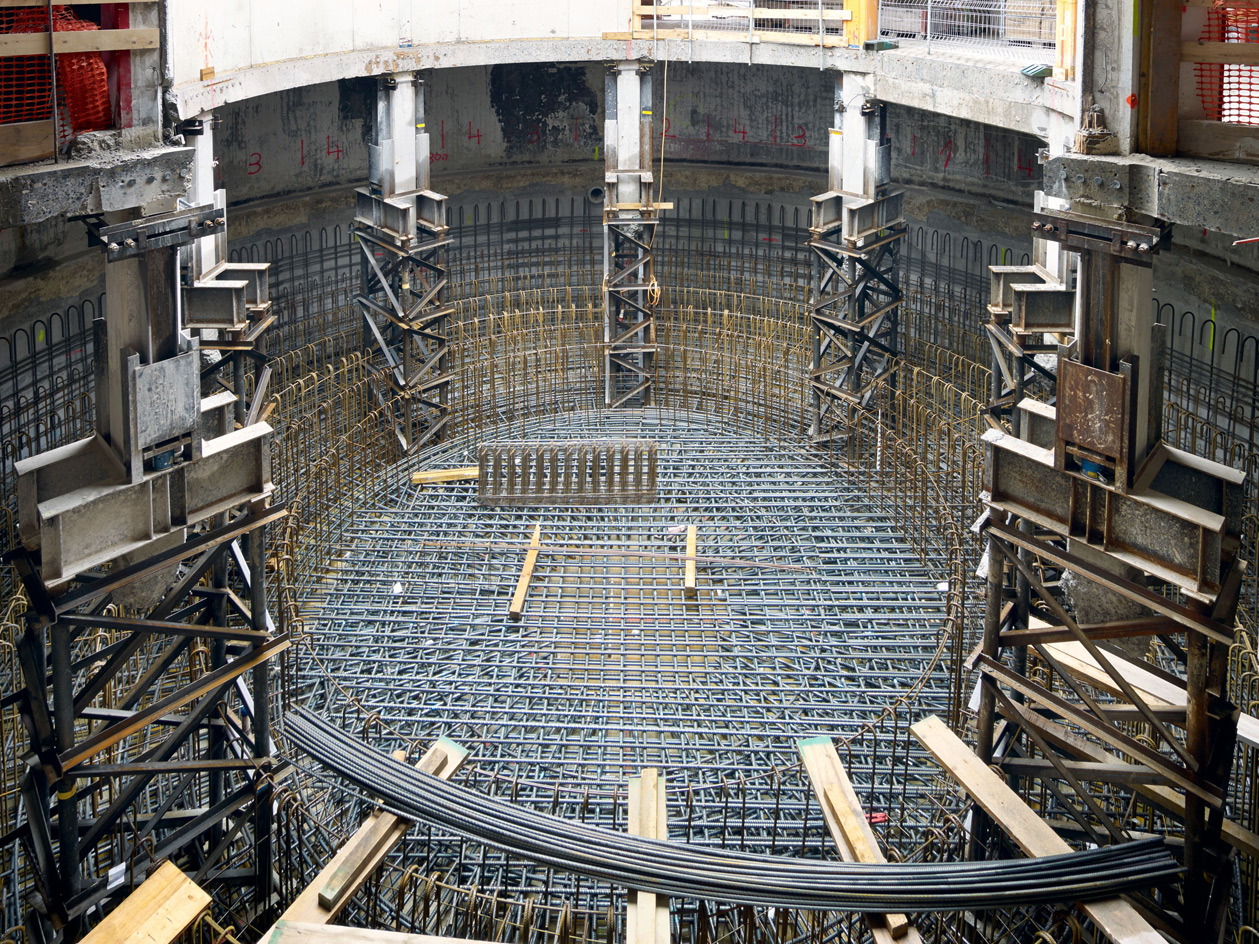
In the 1950s, the age of the automobile, car workshops and showrooms the size of shopping malls became a frequent sight on urban peripheries. The concrete, steel and glass Schlotterbeck Citröen Garage in Zurich, designed in 1951 by Basel architects Suter & Suter, is a perfect example. But needs change and cities evolve. Now, 65 years later, the site is part of the dense city structure and space is at a premium here. The listed building, with its double helix access ramps, has escaped demolition but is being transformed into a hybrid commercial and residential project by giuliani.hönger architects.
During the conversion phase, the changes taking place within the structure of the building are being documented by the Swiss photographer David Willen. Permanence, ruin, renovation, conservation and preservation have also shifted a lot in our understanding over time. Willen’s images preserve for us these transient scenes and spaces that we have learned to value.
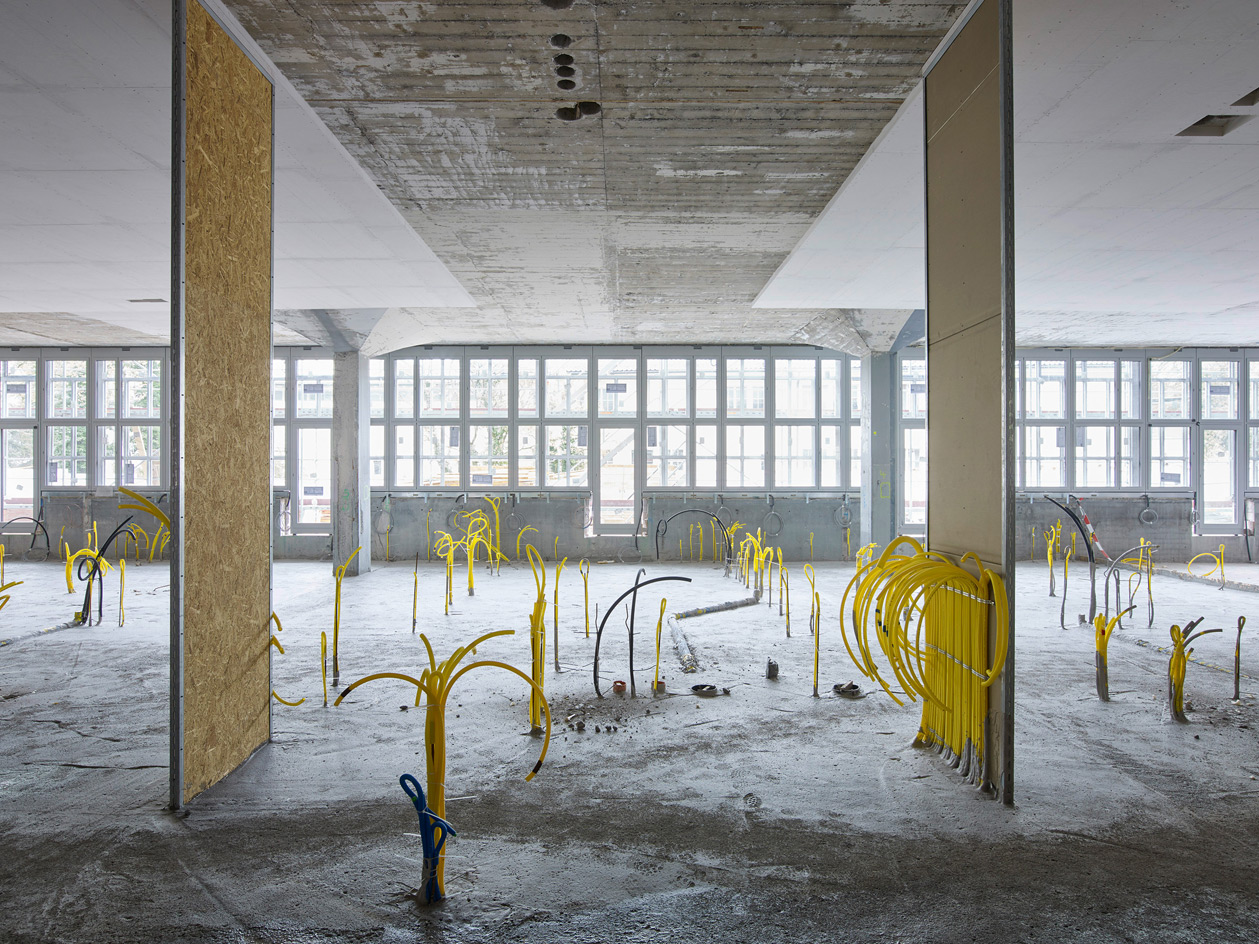
The top loft area and its brightly-coloured electrical installations inspired Willen
Through his eyes we see a building undergoing change as a work of art, the incisions and demolitions like so many Gordon Matta-Clark cuts; found remnants shot by Willen with near pious care; or a roomful of wooden supports that are reminiscent of David Chipperfield’s 2014 art installation of 144 tree trunks in the Neue Nationalgalerie in Berlin.
This project connects the deeper dimension of time to three-dimensional space and compresses it back to us in two-dimensions in the form of images. Willen understands the aesthetic kick we get out of the intersections of great effort and entropy; the inevitable mortality of things and the nascence of the new. Through this ongoing project we get to see not just the rebirth of a building, but the birth of an artwork as well.
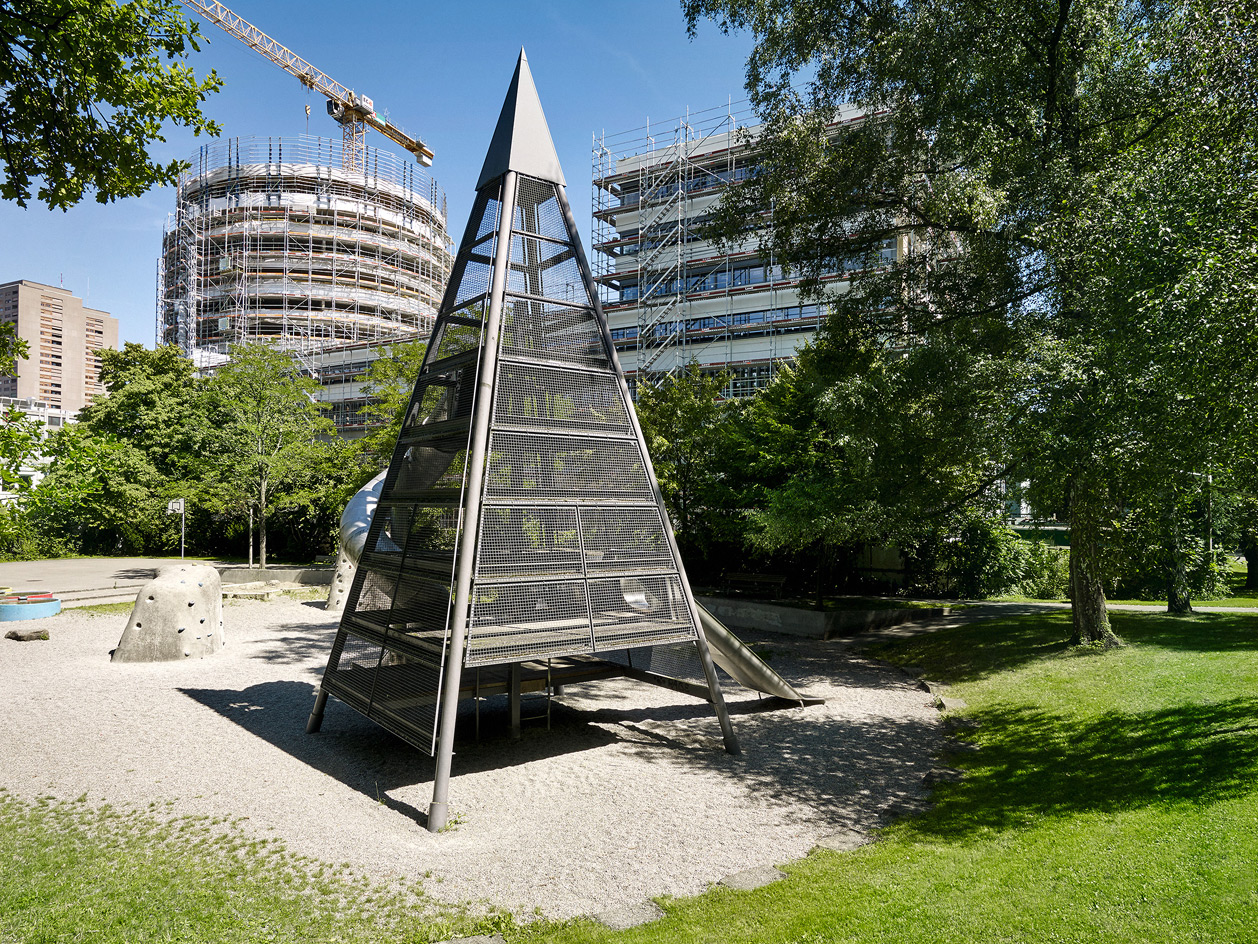
Schlotterbeck under construction, as seen from the nearby park in a densely built part of Zurich
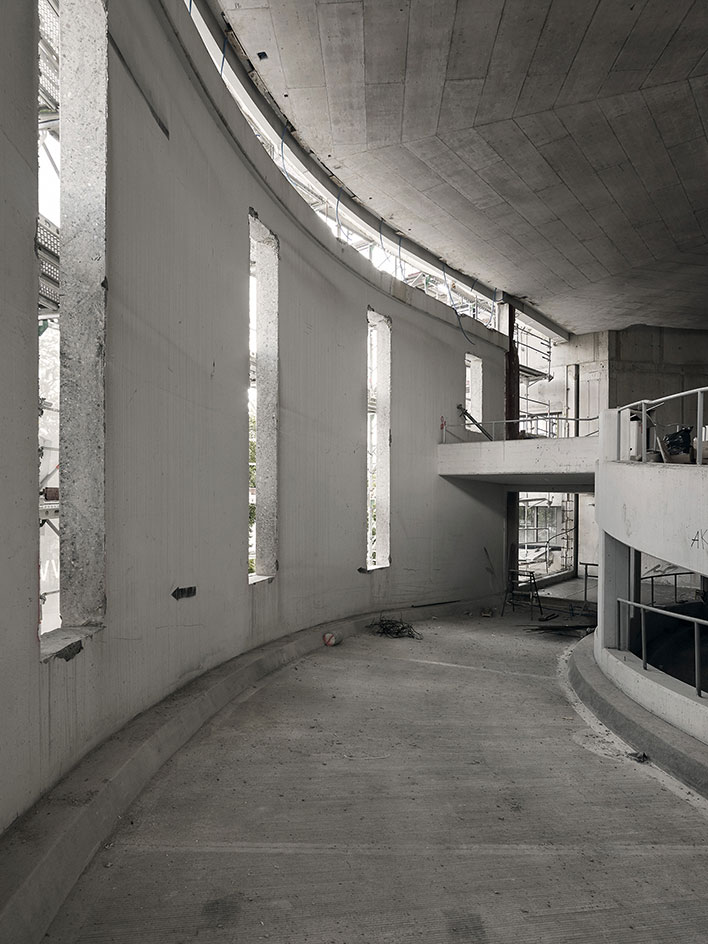
The building’s second floor tower, with its double-helix ramp, now opens on an existing dock wall

On the same floor, giuliani.hönger worked with the listed building’s existing ramp and created its tower volume
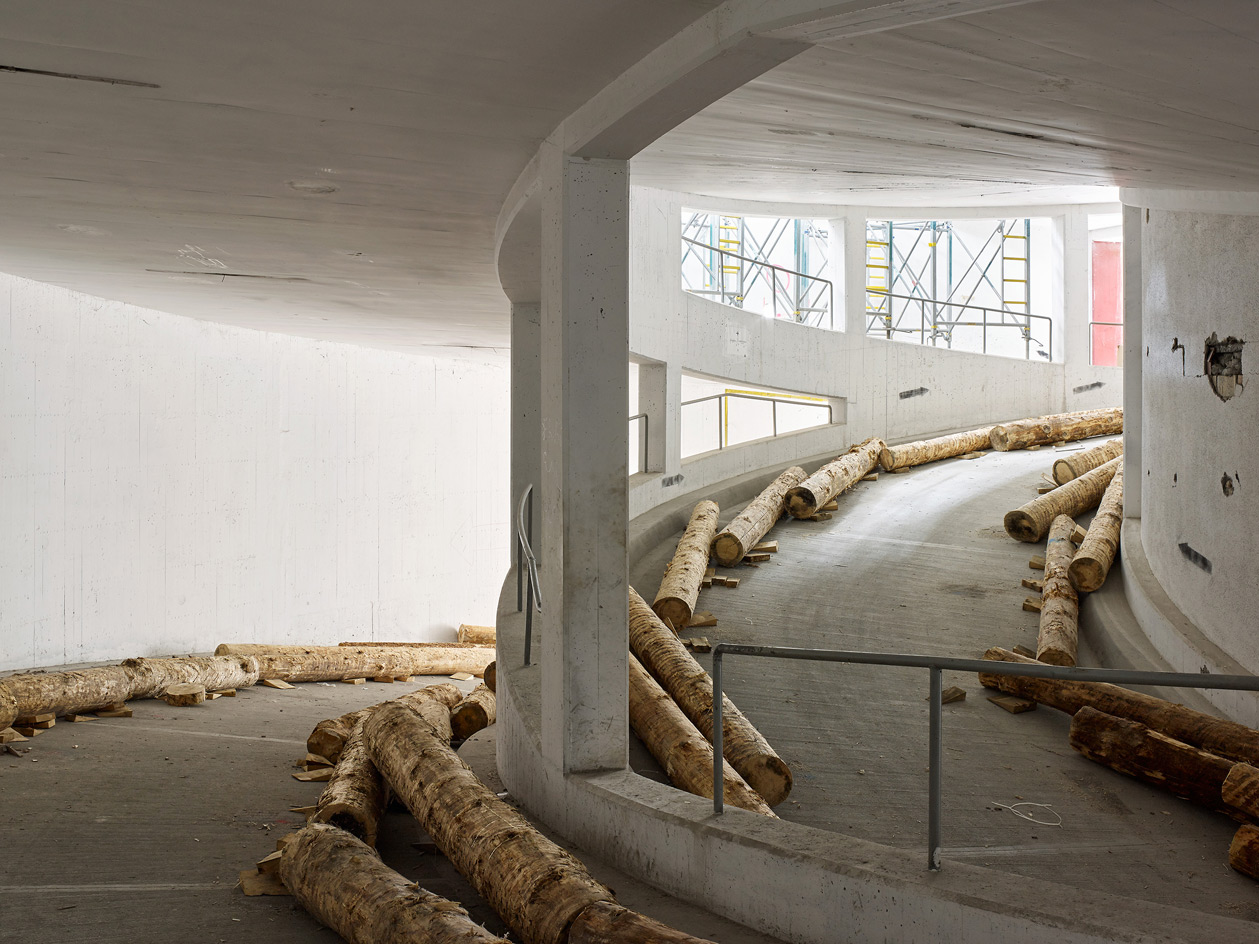
The former concrete, steel and glass structure’s double helix is a key architectural feature in both the old and new life of the Schotterbeck Garage
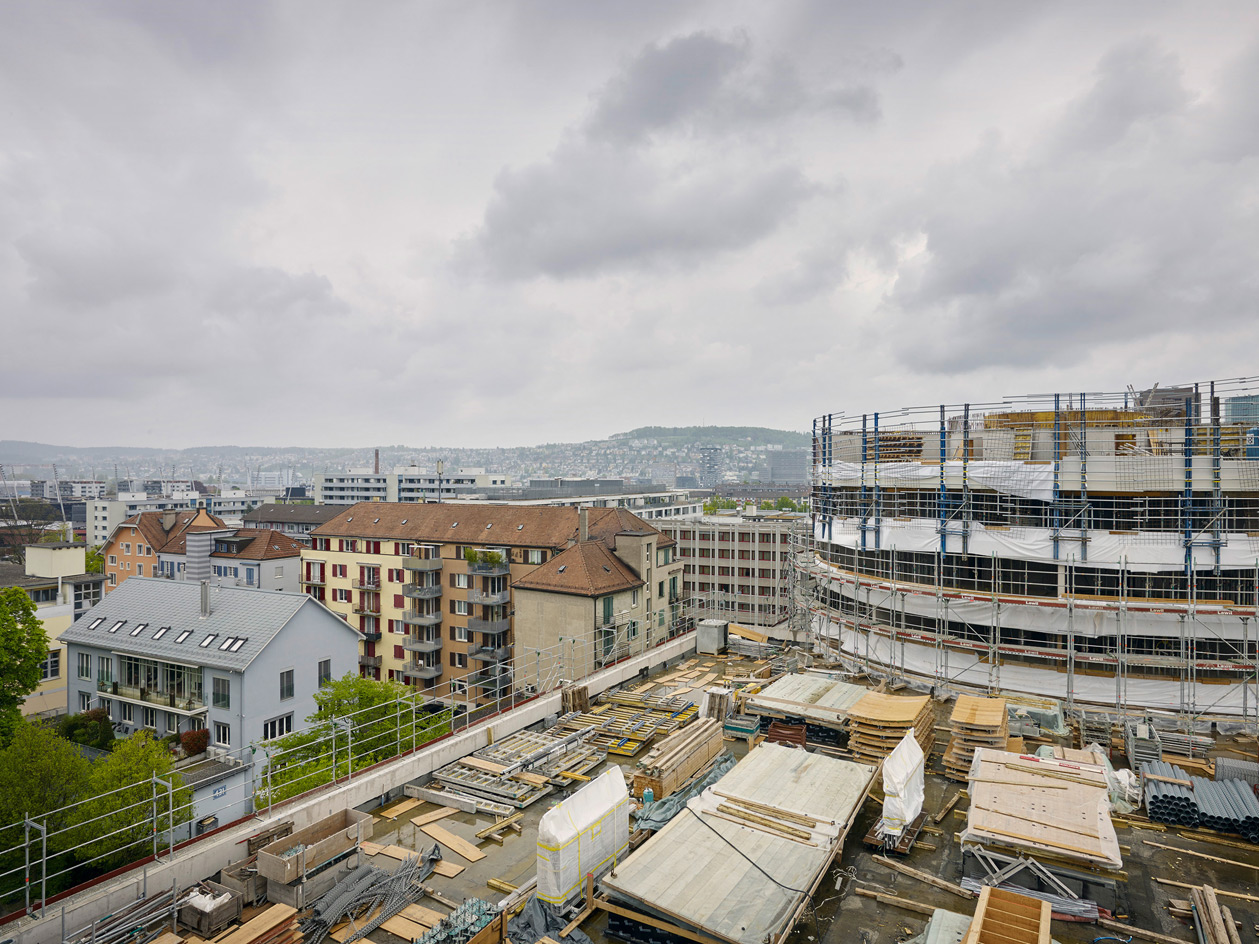
The building offers expansive city views from its roof. Pictured: vistas from the middle section towards the tower
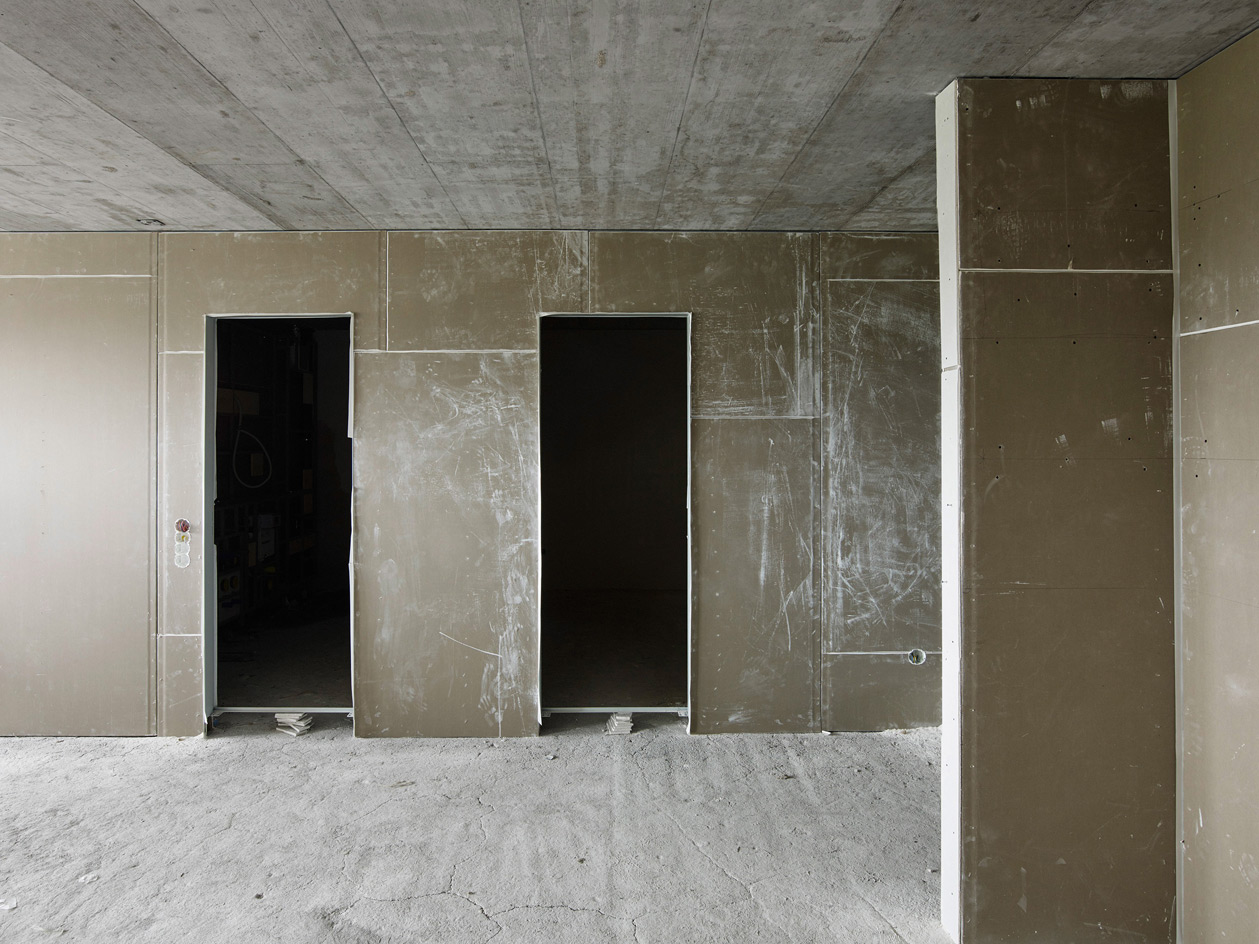
The former factory structure’s third level includes residential units, seen here during the building process
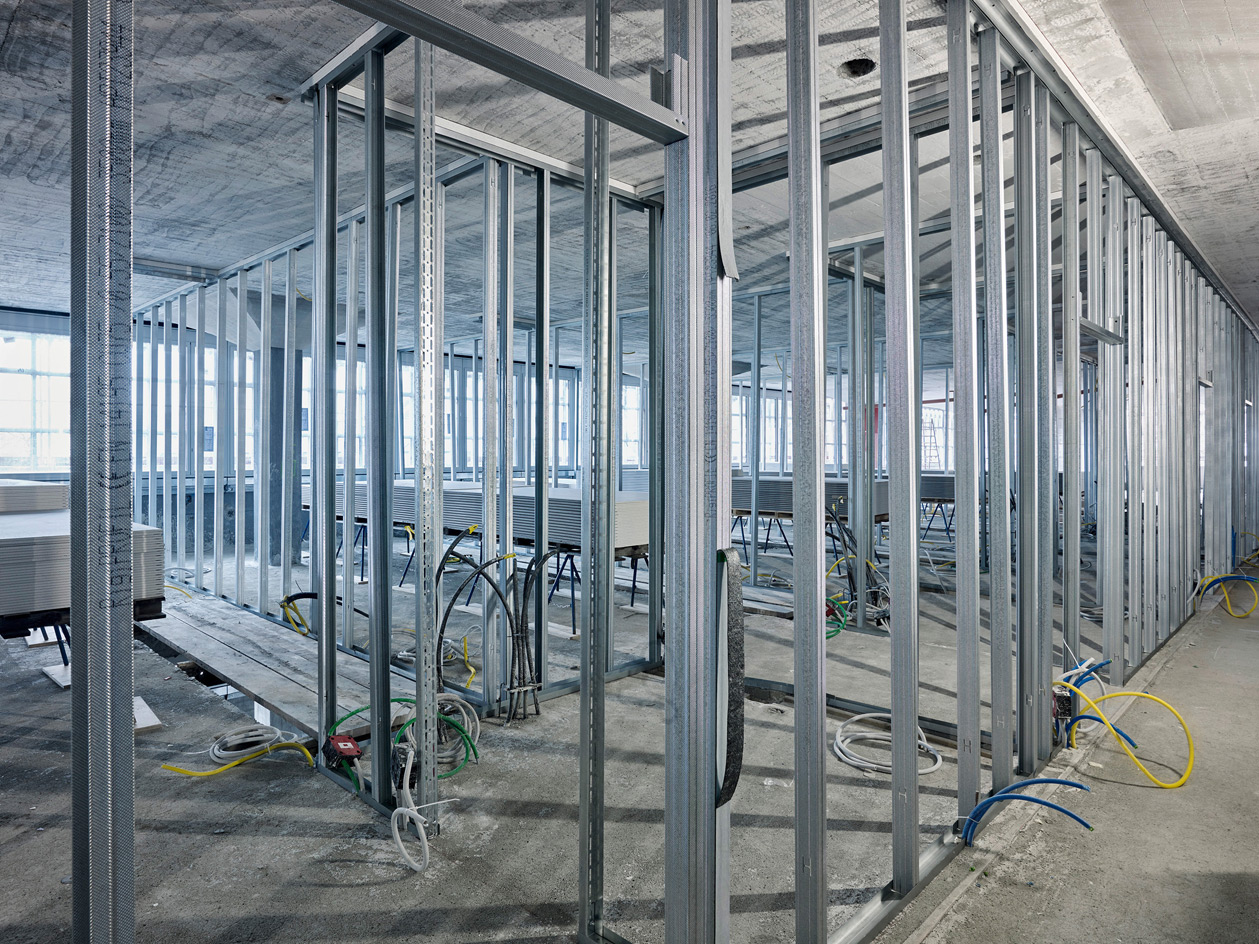
Stud walls on the second floor, before being covered and plastered
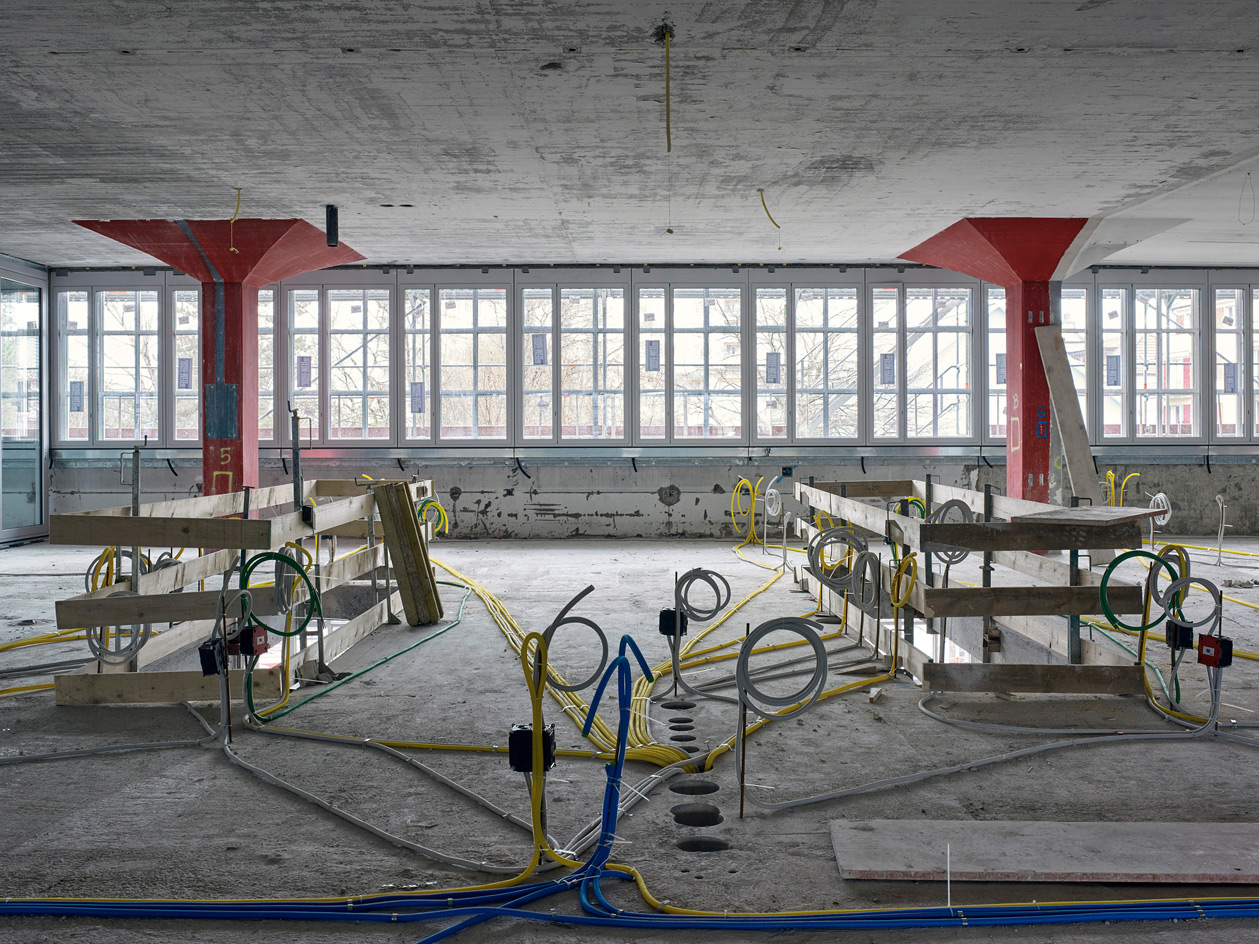
Some of the new apartments are duplex maissonettes, so openings were needed to place staircases to connect the floors
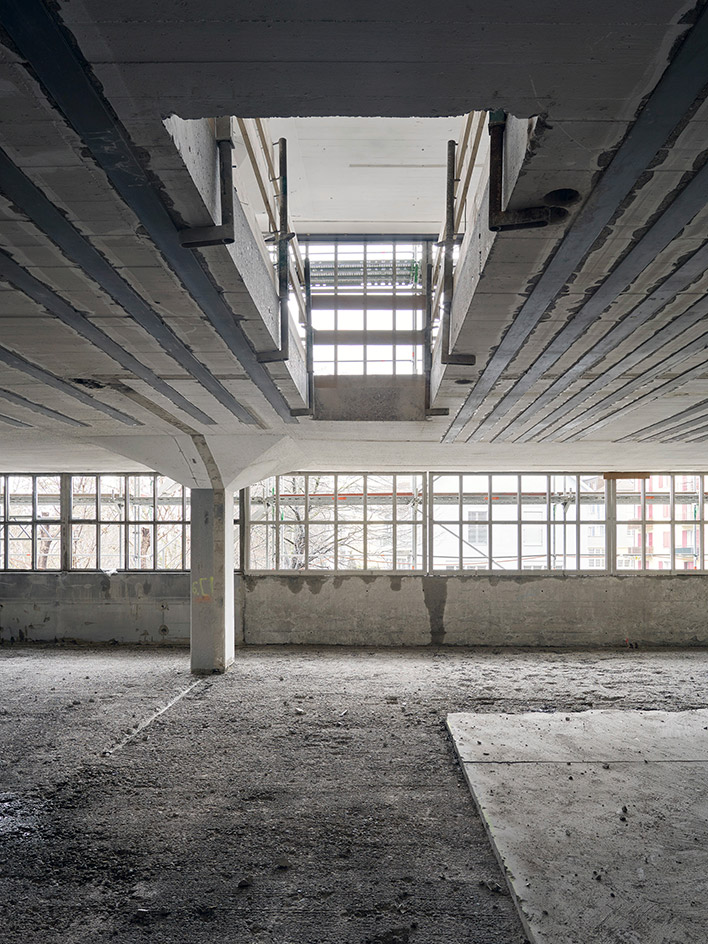
Similarly, pictured here is the recess for a duplex unit’s staircase, part of the former first floor workshop and now a residential space
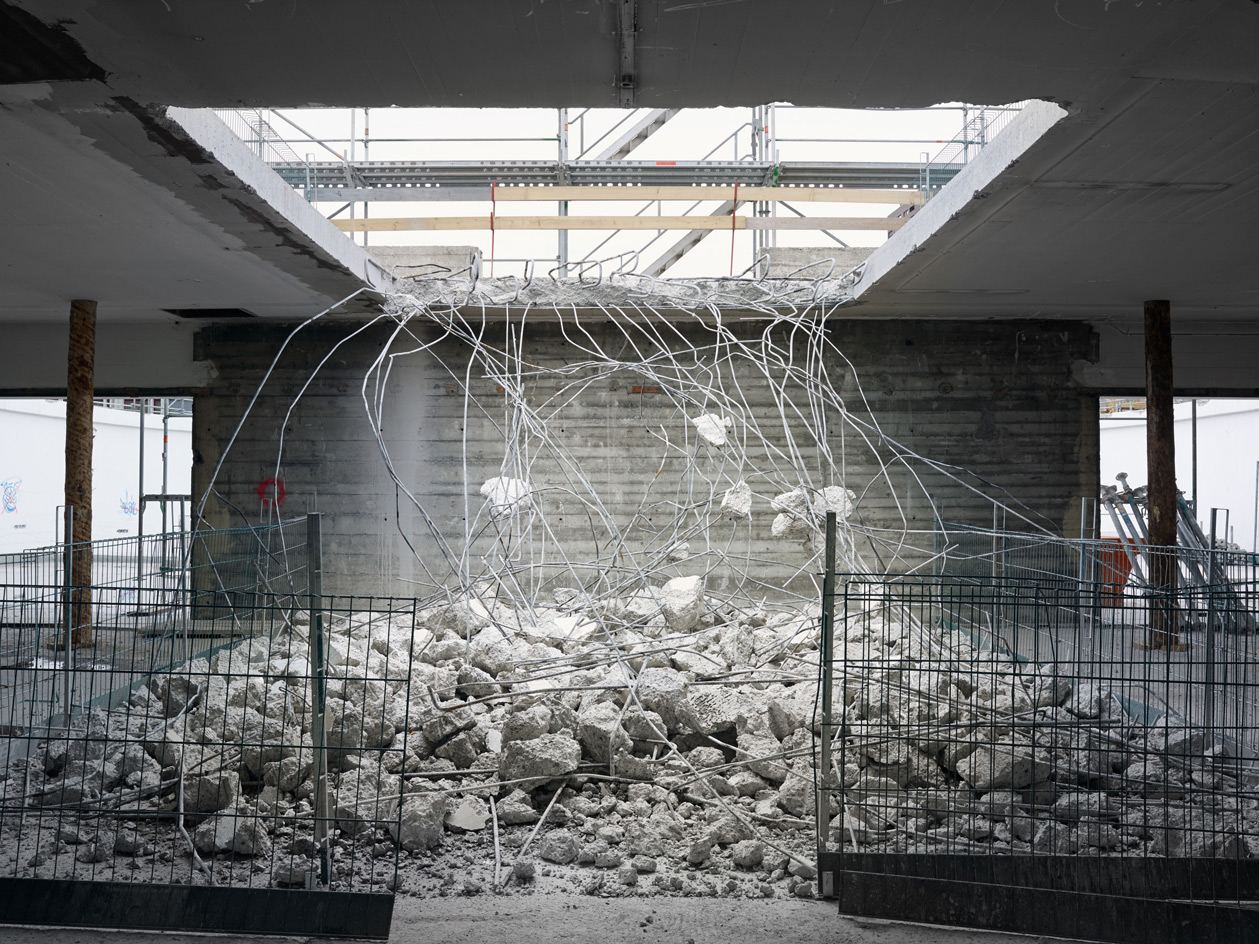
The building’s floorplates were cut open in various places, in order for new staircases to be fitted
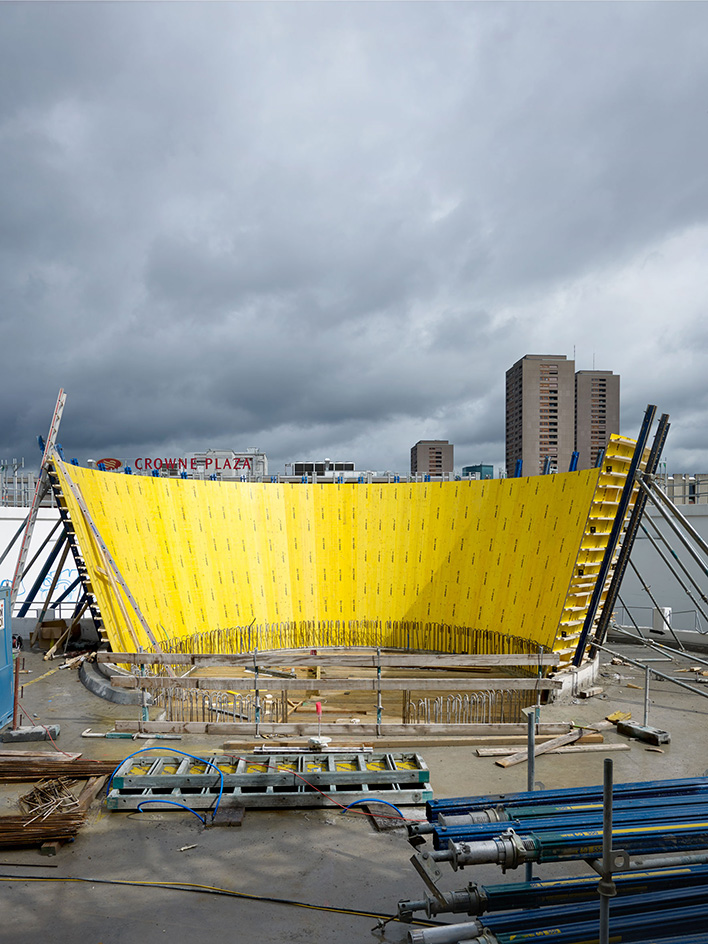
Colourful formwork panels were used to shape the tower’s cylindrical concrete form
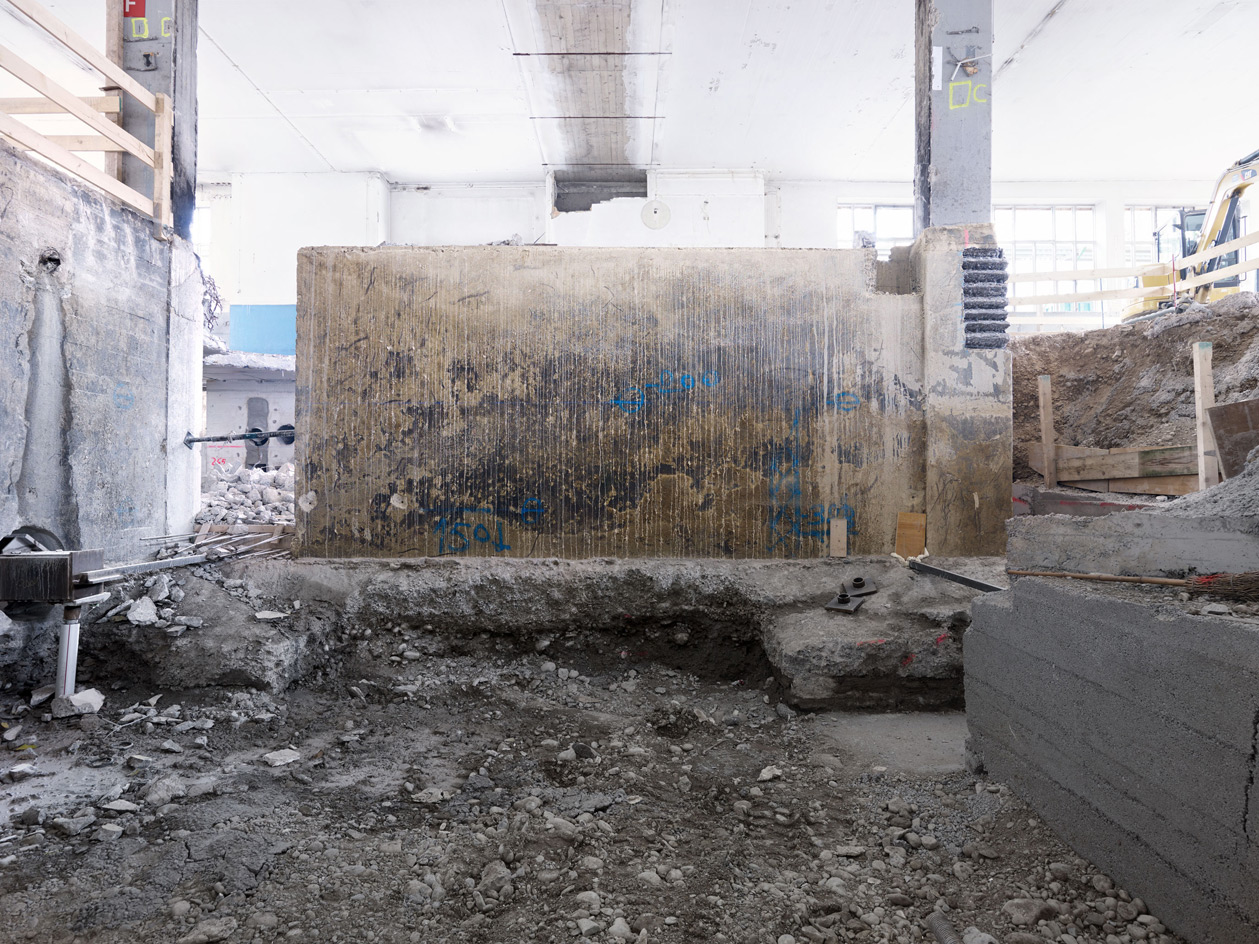
The basement workshop, pictured here with a revealed existing wall that is part of the foundation
INFORMATION
For more information, visit the Project Schlotterbeck website
Photography: David Willen
Wallpaper* Newsletter
Receive our daily digest of inspiration, escapism and design stories from around the world direct to your inbox.
-
 All-In is the Paris-based label making full-force fashion for main character dressing
All-In is the Paris-based label making full-force fashion for main character dressingPart of our monthly Uprising series, Wallpaper* meets Benjamin Barron and Bror August Vestbø of All-In, the LVMH Prize-nominated label which bases its collections on a riotous cast of characters – real and imagined
By Orla Brennan
-
 Maserati joins forces with Giorgetti for a turbo-charged relationship
Maserati joins forces with Giorgetti for a turbo-charged relationshipAnnouncing their marriage during Milan Design Week, the brands unveiled a collection, a car and a long term commitment
By Hugo Macdonald
-
 Through an innovative new training program, Poltrona Frau aims to safeguard Italian craft
Through an innovative new training program, Poltrona Frau aims to safeguard Italian craftThe heritage furniture manufacturer is training a new generation of leather artisans
By Cristina Kiran Piotti
-
 Meet Lisbeth Sachs, the lesser known Swiss modernist architect
Meet Lisbeth Sachs, the lesser known Swiss modernist architectPioneering Lisbeth Sachs is the Swiss architect behind the inspiration for creative collective Annexe’s reimagining of the Swiss pavilion for the Venice Architecture Biennale 2025
By Adam Štěch
-
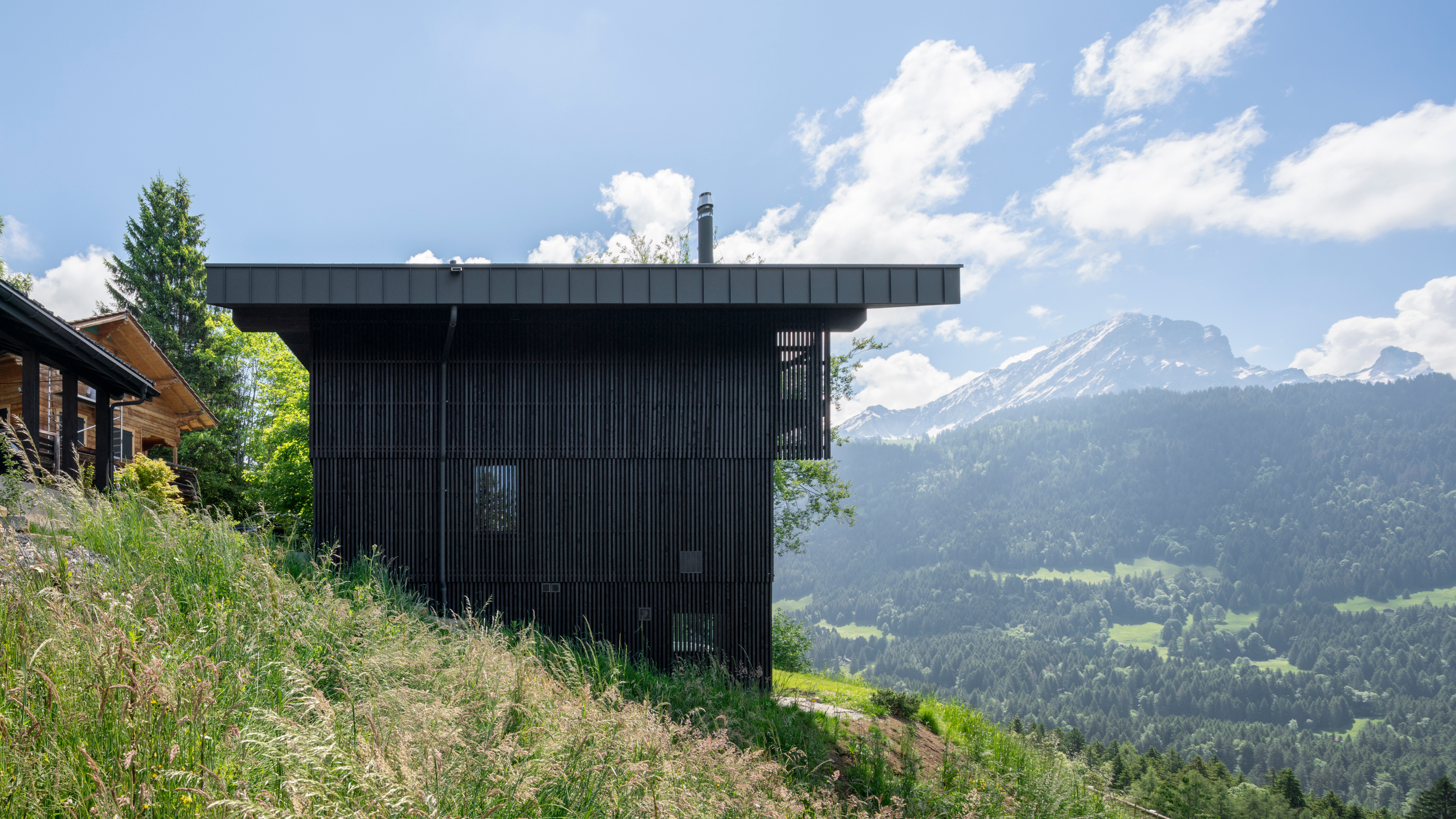 A contemporary Swiss chalet combines tradition and modernity, all with a breathtaking view
A contemporary Swiss chalet combines tradition and modernity, all with a breathtaking viewA modern take on the classic chalet in Switzerland, designed by Montalba Architects, mixes local craft with classic midcentury pieces in a refined design inside and out
By Jonathan Bell
-
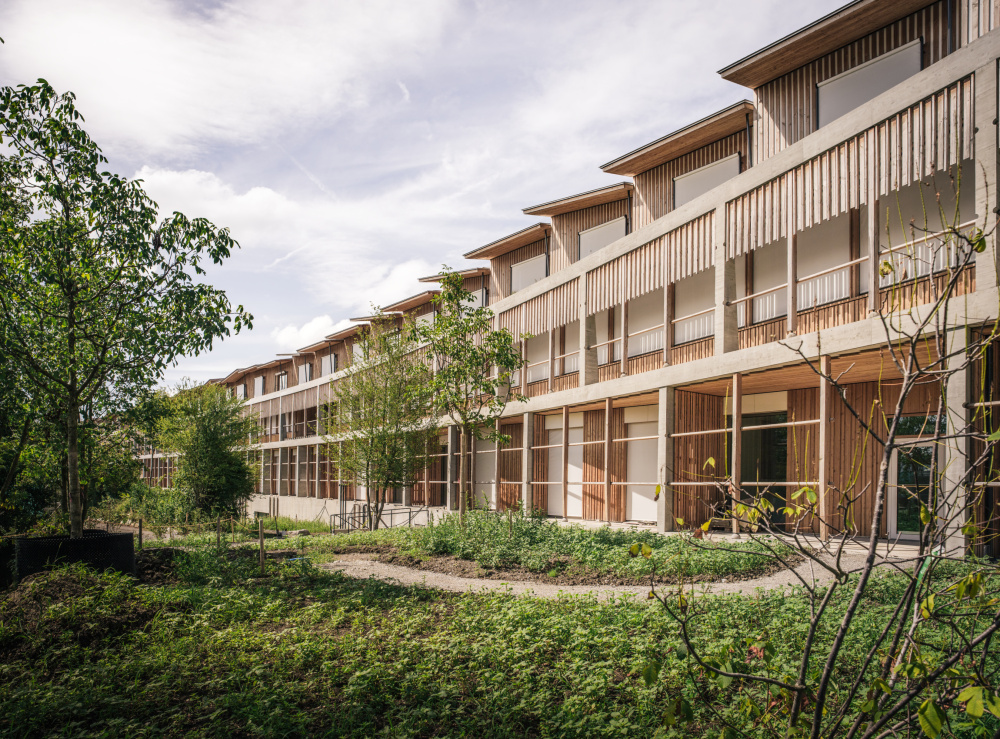 Herzog & de Meuron’s Children’s Hospital in Zurich is a ‘miniature city’
Herzog & de Meuron’s Children’s Hospital in Zurich is a ‘miniature city’Herzog & de Meuron’s Children’s Hospital in Zurich aims to offer a case study in forward-thinking, contemporary architecture for healthcare
By Ellie Stathaki
-
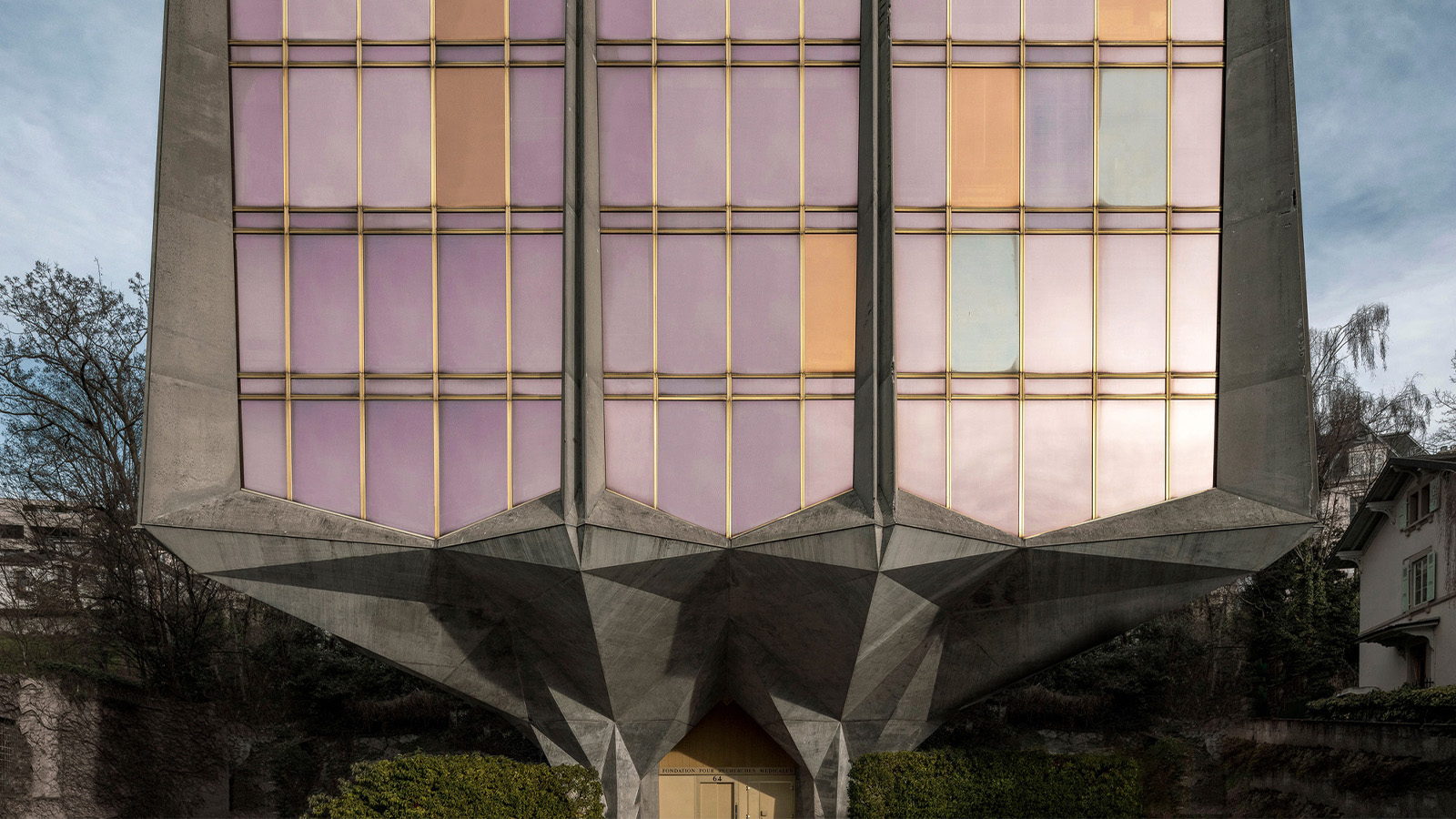 Step inside La Tulipe, a flower-shaped brutalist beauty by Jack Vicajee Bertoli in Geneva
Step inside La Tulipe, a flower-shaped brutalist beauty by Jack Vicajee Bertoli in GenevaSprouting from the ground, nicknamed La Tulipe, the Fondation Pour Recherches Médicales building by Jack Vicajee Bertoli is undergoing a two-phase renovation, under the guidance of Geneva architects Meier + Associé
By Jonathan Glancey
-
 Remembering Alexandros Tombazis (1939-2024), and the Metabolist architecture of this 1970s eco-pioneer
Remembering Alexandros Tombazis (1939-2024), and the Metabolist architecture of this 1970s eco-pioneerBack in September 2010 (W*138), we explored the legacy and history of Greek architect Alexandros Tombazis, who this month celebrates his 80th birthday.
By Ellie Stathaki
-
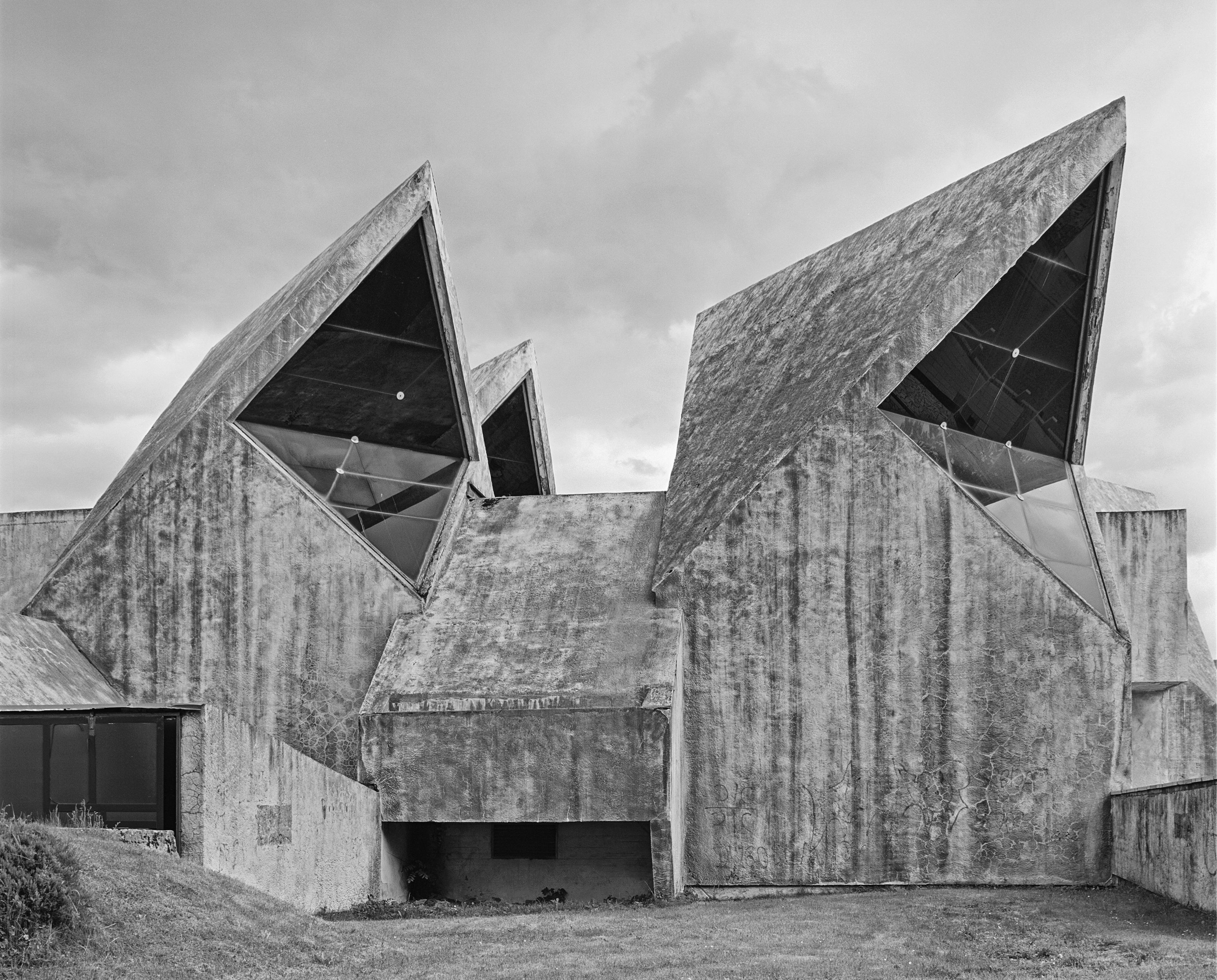 All hail the power of concrete architecture
All hail the power of concrete architecture‘Concrete Architecture’ surveys more than a century’s worth of the world’s most influential buildings using the material, from brutalist memorials to sculptural apartment blocks
By Jonathan Bell
-
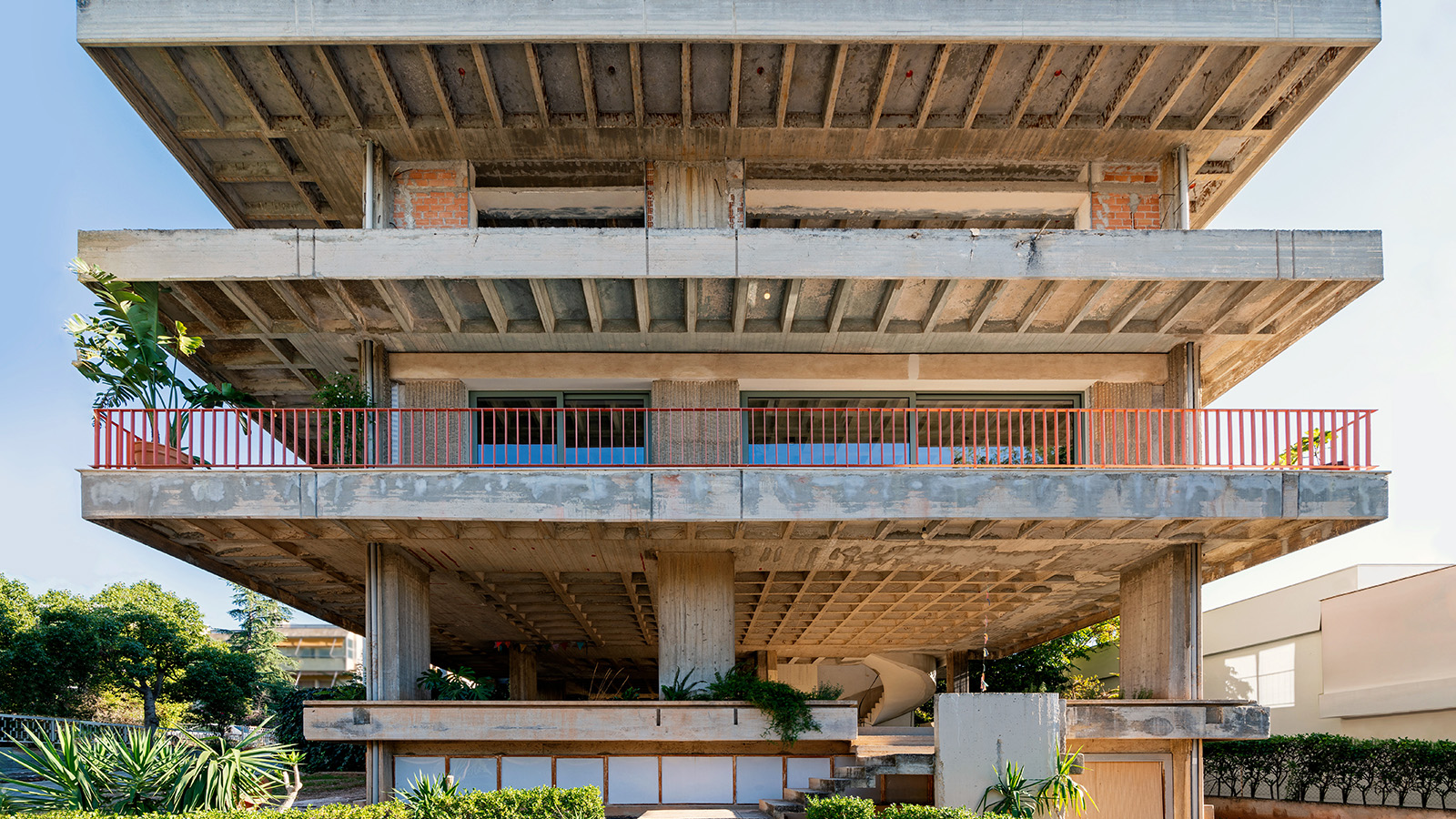 Three Object Apartment embraces raw concrete honesty in the heart of Athens
Three Object Apartment embraces raw concrete honesty in the heart of AthensThree Object Apartment by DeMachinas is a raw concrete home in Athens, which confidently celebrates its modernist bones
By Ellie Stathaki
-
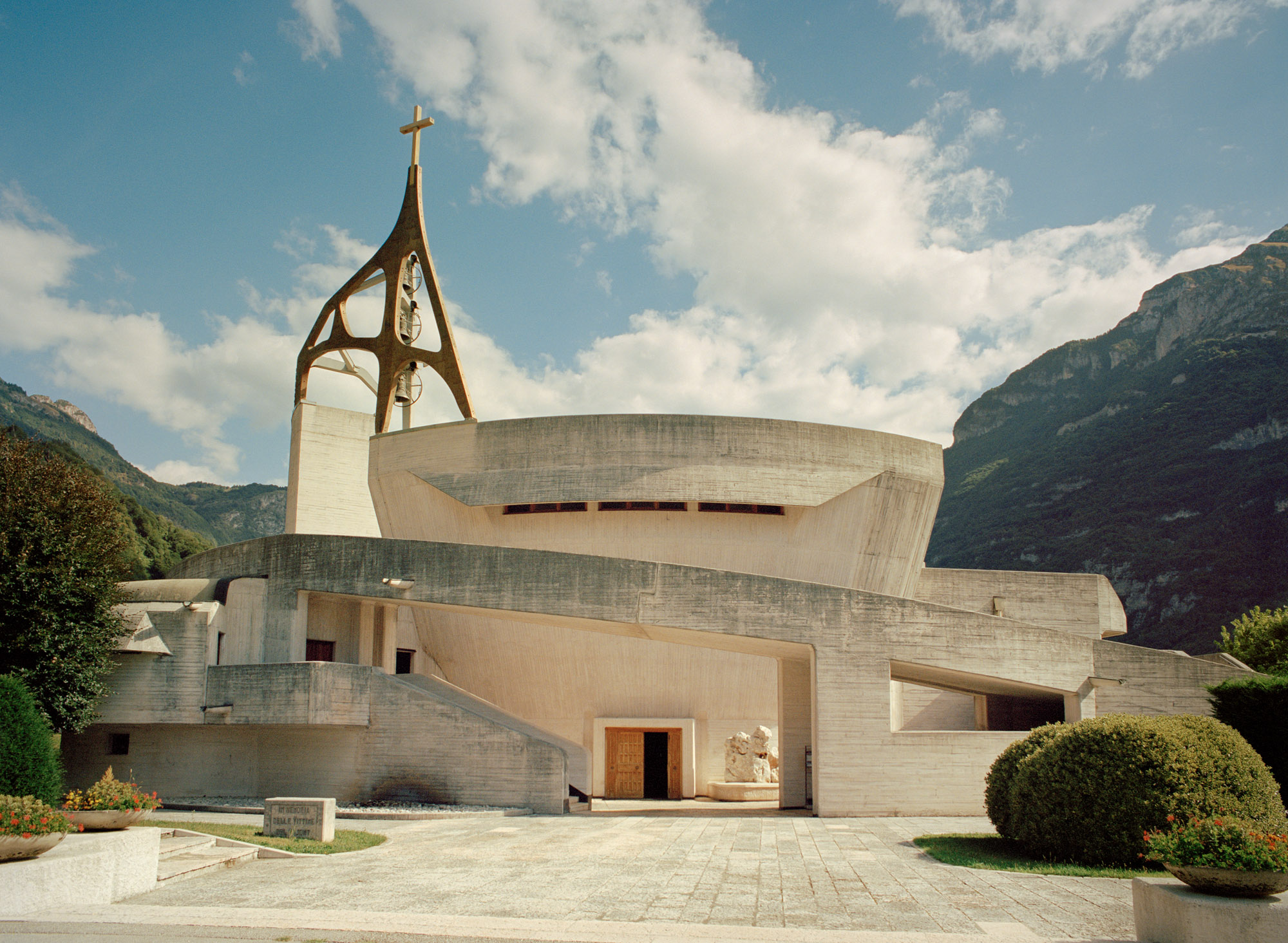 Giovanni Michelucci’s dramatic concrete church in the Italian Dolomites
Giovanni Michelucci’s dramatic concrete church in the Italian DolomitesGiovanni Michelucci’s concrete Church of Santa Maria Immacolata in the Italian Dolomites is a reverently uplifting memorial to the victims of a local disaster
By Jonathan Glancey